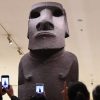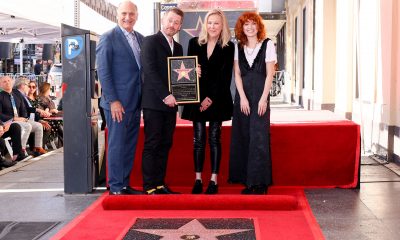ART NEWS
The many shades of Madhuvanti
Raga in Indian classical music is a structured being. Its personality is formed by a definite cluster of notes, each of them with a fixed melodic position. The behaviour during its ascent and descent is more or less defined. Given this framework, it can be concluded that Indian raga music has a defined existence, working within a set of prerequisites or parameters. Therefore, one often stumbles upon statements such as classical music is rigid, it has a fixed identity, and so on.The other day, browsing through YouTube, I accidentally revisited one of my favourite songs, ‘Rasm-e-ulfat’ from the film, Dil Ki Rahen (1973, lyrics by Naqsh Lyalpuri) composed by the inimitable Madan Mohan. The song remained with me every waking moment over the next few days. What was it? I began to analyse. Was it Lata Mangeshkar’s rendition? The tune? Or was it the raga? I continued browsing and realised that the composition has attracted many musicians, and YouTube has innumerable renditions of it — from ghazal mehfils and music reality shows to international brass bands to the most recent one by Hindustani vocalist Rahul Deshpande, who sang it as a tribute to Lata for her 92nd birthday.Lingering effectUndoubtedly, it is the rendition and composition that make the song linger. But it is also the edifice on which the magnificent structure is built, which is raga Madhuvanti. Going back to where we began, let’s define Madhuvanti — it belongs to Thodi Thaat and resembles raga Multani. It is an audava-sampoorna raga, which means it employs five notes (in very specific shades) as it ascends and all seven notes as it descends. As per theory, the mood is sringara, of love and romance. Like every other raga, this too has a characteristic combination of swaras, they appear in certain phrases. Having put together all this information, let’s listen to ‘Rasm-e-ulfat’ again. It is faultless, with no digression, no rule flouted, and no foreign note. In other words, it is raga Madhuvanti in its complete self. Now, let’s pick a rendition of Madhuvanti from its own bastion, the khayal. We can juxtapose ‘Tore Gun Gaaon’ by Ustad Rashid Khan with Madan Mohan’s ‘Rasm-e-Ulfat’. The melodic movement of both are more or less the same, they open in the same octave. They are “pure” Madhuvanti, and display similar features. Since both abide by the Madhuvanti theory, the next question that arises is, are they same?I explored more about the raga and unravelled two fine compositions in Kannada: ‘Kanasalli Bandavanaru’ from the film Shruti Seridaga (1987, S. Janaki), and ‘Ninna Roopu Edeya Kalaki’ from Parasangada Gendethimma (1978, S. Janaki). The former – composed by maestro T.G. Lingappa — is a song with catchy phrases, tending towards the higher octave. The latter is a complete surprise from Rajan-Nagendra. Cast in a folk idiom, the song completely underplays the drama whipped up by ‘Kanasalli…’. With restrained sensuousness, Madhuvanti is couched in a fresh narrative, with minor departures in the background score. Ilaiyaraja composed two melodies in Madhuvanti, both distinctive. ‘Enulil Engo’ from the Tamil film, Rosaapoo Ravikkaikkaari (1979), is beautifully rendered by Vani Jayaram. Ilaiyaraja approaches the song in both traditional and modern idioms, the alap in the charanam serving as the separator to its twin interpretations. ‘Ilanjolai Poothadha,’ composed in 1986 for the film Unakavae Vazhgirein comes with an entirely different articulation. Sculpted in the Carnatic style, the classical Madhuvanti dominates the entire song. It is very similar in appearance to ‘Kanasalli,’ and the Hindustani counterpart to this could be ‘Ajahun Aaye’ from the film Saanjh Aur Savera (1964, Mohammed Rafi).Musicologist Deepak Raja, in his essay on Madhuvanti, arrives at an interesting conclusion. He studies recordings of classical musicians like Pt. Jasraj, Ustad Bismillah Khan, Pt. Bhimsen Joshi, Pt. Ravi Shankar, Ustad Rashid Khan and a few others. He recognises that the raga treatment by the senior musicians is different from the younger generation, and he proves this with a technical point. While this is a good point to debate the notion of “structure and identity”, the differences and the sameness have also to be understood beyond the technical. What the technical does to the emotional forms the essence of music. Madan Mohan was often criticised for being an emotional composer. “People often criticise me for being melancholic. But if you don’t understand the pain of human life, you cannot make music,” he said. Thus, even though the rulebook states that Madhuvanti invokes the romantic, for Madan Mohan it summoned sadness. Each of the composers discussed here has seen the raga beyond its formulaic existence, giving it colour and texture from their imagination.Extending the metaphysics of Plato to music, the fundamental theory of forms is the likeness of things and not the sameness. If every song constructs its own universe from an essence that is indivisible, then each of those songs becomes a divisible expression of that essence. All songs in Madhuvanti are thus divisible expressions of that larger essence called Madhuvanti. Sameness, therefore, lies in difference. One song in Madhuvanti can never resemble another. The raga is actually a journey to anuraga, a fusion of the physical and non-physical states.It is time we gave some nuance to definitions.











